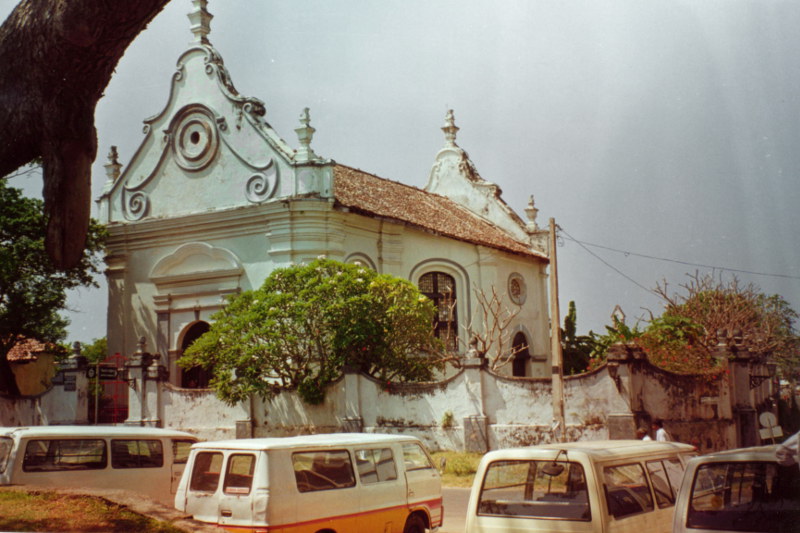The first place I went once inside the walls of the fort was the Dutch Reformed Church, or the Groote Kerk. The church was originally founded in 1642 and is still active with approximately 5,000 members. The original church was destroyed and replaced with its current rendition in 1755. It’s built on the site of an earlier Portuguese convent and has a small graveyard.
The interior of the church is simple, no painted windows, no elaborate stained glass, and the floor is made of old gravestones recovered from the original building. These stones have a typical colonial style with skull motifs, animal designs, and Dutch lettering.
The ceiling looks like the bottom of a ship and it is painted baby blue. The walls are white washed with monuments to various people on the walls. This seems to be a common trend, perhaps because these people died so far from home. Mary Anne Garstin died 1848 aged 27; and, George Bagnell fell in action near Arrah Bengal on July 30, 1857 aged 20. There are faceless people who are now in my journal. A plaque behind me tells of the first Methodists to leave England: Dr. T. Coke, Wm. Harward, B. Clough, T.H. Squance, J. Lynch, G. Erskine and W. Ault. Dr. Coke died on the voyage and Harward liked Bombay so much he stayed there. The rest eventually made it to Galle.
In my obsession about thinking about dying in a foreign country I wonder if these people had a choice about being in Sri Lanka. Was fighting for Galle or even India worth dying for? Were they only here because they were being paid? Or was it some other reason?

0 comments on “The Groote Kerk”Add yours →